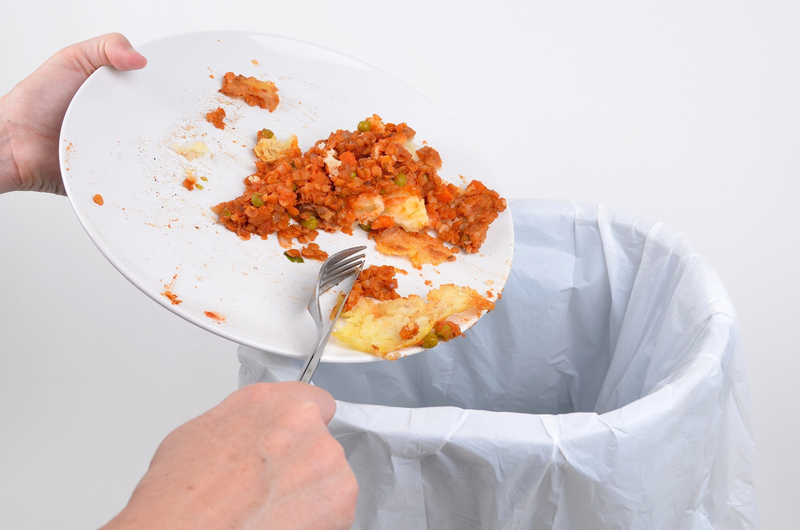Keeping Your Community Clean With Smart PPE Waste Disposal
The global COVID-19 pandemic brought personal protective equipment (PPE) into mainstream use like never before, resulting in a surge of masks, gloves, and other PPE waste in our everyday environments. From city streets to rural landscapes, discarded PPE has become an urgent environmental challenge. This comprehensive guide explores how implementing smart PPE waste disposal practices can help keep your community clean, support public health, and safeguard the environment.
Understanding PPE Waste and Its Environmental Impact
To effectively manage PPE waste, it's crucial first to understand what it is and why it matters. PPE (Personal Protective Equipment) includes masks, face shields, gloves, gowns, and shoe covers -- all designed for single or limited use. While these items protect us from infectious agents, their improper disposal can negatively impact our communities.
PPE Waste: A Mounting Environmental Concern
- PPE is mostly made from plastics such as polypropylene, nitrile, and polyethylene.
- Once discarded, these items can linger in the environment for hundreds of years.
- Masks and gloves litter public spaces, clog drains, endanger wildlife, and contribute to microplastic pollution.
- Improper disposal of contaminated PPE can pose health risks by spreading infectious agents.
The United Nations Environment Programme (UNEP) estimates that about 75% of used masks, along with other pandemic-related waste, will end up in landfills or floating in the oceans -- a serious hazard to ecosystem health.

The Importance of Smart PPE Waste Disposal in Communities
In the face of this challenge, smart PPE waste disposal methods are emerging as effective solutions for maintaining clean and healthy neighborhoods. These approaches involve a combination of advanced technology, effective public education, and efficient systems for collection and processing.
Why Smart PPE Waste Management?
- Health Safety: Reduces risk of contamination and disease transmission.
- Environmental Protection: Limits plastic pollution and preserves biodiversity.
- Regulatory Compliance: Ensures adherence to local, state, and federal waste management regulations.
- Community Pride: Fosters a sense of responsibility and community well-being.
Communities that prioritize intelligent PPE disposal safeguard public spaces, reduce landfill burden, and lead by example in environmental stewardship.
Smart Solutions for PPE Waste: Methods and Innovations
1. Dedicated PPE Disposal Bins
The first step in smart PPE waste management is the installation of clearly marked, strategically placed PPE disposal bins. These bins should be:
- Contactless: Using foot pedals or sensors to prevent further contamination.
- Clearly labeled: Distinct colors and signage to distinguish PPE from general or recycling waste.
- Widely accessible: Placed at public entrances, transport stations, parks, shopping areas, and clinics.
2. IoT-Enabled Smart Waste Bins
Advancements in the Internet of Things (IoT) have paved the way for smart PPE disposal bins. These high-tech bins:
- Monitor fill levels in real-time, alerting collection services when nearly full.
- Reduce overflow and ensure timely disposal, minimizing environmental leaks.
- Support data collection and analytics for better waste management planning.
By adopting smart bins, municipalities can optimize waste collection routes and improve operational efficiency.
3. Community PPE Waste Collection Initiatives
Organized PPE waste collection drives add a personal touch to disposal efforts:
- Encourage local volunteers or neighborhood associations to conduct regular PPE cleanup events.
- Partner with schools, businesses, and places of worship for wider reach.
- Promote education campaigns about safe PPE disposal on social media and community boards.
*Empowering communities* leads to a sense of shared responsibility in maintaining cleanliness.
4. Recycling and Innovative Upcycling of PPE Waste
While most PPE is not traditionally recyclable due to contamination risk, innovative technologies are emerging:
- Specialized processing plants can sterilize and recycle certain PPE types, converting plastic into construction materials or energy.
- Research initiatives are exploring conversion of PPE waste into road surfacing materials and industrial products.
- Eco-friendly startups are piloting upcycling projects for masks and gowns.
5. Home and Business PPE Waste Protocols
Homes, offices, retail shops, and medical facilities all generate PPE waste. Responsible management involves:
- Setting up clearly labeled bins specifically for used PPE.
- Ensuring safe handling: used PPE should be bagged and tied before disposal to minimize exposure.
- Following municipal guidelines for collection days and proper bin placement.
Steps To Implement Smart PPE Waste Disposal in Your Community
Step 1: Assessment and Planning
Begin by evaluating your community's PPE waste generation and existing disposal patterns. Identify hotspots where PPE litter is most prevalent -- public transport hubs, shopping centers, parks, or healthcare facilities. Collaborate with local government, waste management companies, and environmental NGOs for support and resources.
Step 2: Install and Maintain Smart PPE Waste Bins
Invest in IoT-enabled bins or clearly marked PPE-only containers. Regularly inspect and service these bins to prevent overflow and contamination. Use signage and digital outreach to educate the public on proper usage.
Step 3: Launch Public Awareness Campaigns
A successful smart PPE waste management program relies on widespread community participation. Consider:
- Social media challenges and local influencer partnerships.
- Educational workshops at schools and businesses.
- Distributing informational flyers and posters.
Encourage responsible behaviors and highlight the dangers of careless PPE disposal.
Step 4: Monitor, Optimize, and Innovate
Use data from smart disposal systems to monitor fill rates, peak usage times, and identify underperforming areas. Adjust bin locations and pickup frequency as needed. Stay informed of the latest advancements in eco-friendly PPE disposal.
Best Practices for Personal and Workplace PPE Waste Management
For Individuals:
- Always dispose of used PPE in dedicated bins. Do not toss masks or gloves on the ground or in recycling containers.
- If a PPE-only bin is unavailable, seal used items in a bag before placing them in general waste.
- Wash your hands thoroughly after disposing of PPE.
- Support local PPE waste cleanup initiatives or awareness campaigns.
For Businesses and Organizations:
- Equip premises with labeled, hands-free PPE waste bins at all entrances and high-traffic areas.
- Train staff on PPE handling and disposal protocols.
- Partner with certified waste management services for safe collection, transportation, and processing.
- Keep up-to-date with regulatory requirements and eco-friendly disposal alternatives.
For Educational and Healthcare Facilities:
- Integrate PPE waste disposal into hygiene and safety curricula.
- Display clear instructions and reminders for students, patients, and staff.
- Regularly disinfect PPE collection points and provide adequate supplies of disposal bags and containers.
The Role of Policy and Regulation in Smart PPE Waste Disposal
For effective PPE waste management, robust policy frameworks are essential. Governments and local authorities can:
- Mandate the installation of PPE waste bins in public areas.
- Enforce fines for littering PPE, especially near sensitive locations.
- Incentivize research and adoption of PPE recycling technologies.
- Promote public-private partnerships to drive awareness and infrastructure development.
International Best Practices and Challenges
Across the world, countries are responding to PPE waste with varying strategies. Some success stories include:
- Singapore: Use of AI-powered surveillance and integrated cleaning teams to minimize PPE litter.
- Canada: Provincial programs for collection and safe disposal of medical-grade PPE waste from households.
- UK: Pilot schemes converting used PPE into building materials for community construction projects.
*Key challenges* include funding, public participation, and the currently limited recyclability of single-use PPE. However, innovation and strong policy are driving positive change.
How You Can Advocate for Better PPE Waste Disposal
You don't need to be a policymaker or public health expert to make a difference in your community:
- Report excessive PPE litter to local authorities and encourage cleanup actions.
- Advocate for more smart bins and better signage in public venues.
- Volunteer for or organize neighborhood PPE waste collections.
- Support organizations developing biodegradable PPE or efficient recycling methods.
- Educate friends, family, and colleagues about the importance of smart PPE disposal.

Future Trends in Smart PPE Waste Disposal
The future of PPE waste management is promising, thanks to ongoing technological innovation and global commitment. Expected trends include:
- Development of fully compostable PPE products to replace petroleum-based plastics.
- Smart tracking systems using QR codes for traceable PPE waste disposal from production to end-of-life.
- Expansion of pyrolysis and other advanced recycling processes for contaminated PPE plastics.
- AI-driven optimization for waste collection and resource allocation at municipal levels.
*Environmental consciousness* and civic responsibility will be integral to these advancements, ensuring cleaner and healthier communities worldwide.
Conclusion: The Collective Responsibility of Smart PPE Waste Management
The challenge of PPE waste is a stark reminder of the interconnectedness of public health and environmental sustainability. Smart PPE waste disposal is not just about installing better bins -- it's about adopting a holistic approach that melds technology, education, community effort, and responsible policy.
By embracing intelligent PPE waste management in our neighborhoods, workplaces, and daily lives, we can ensure cleaner streets, safer environments, and a healthier future for all. Every action -- from using the right bin to supporting innovative recycling solutions -- contributes to the greater good. Let's commit, together, to keeping our communities clean through smarter, safer PPE waste disposal.
Remember: The cleanliness of our environment is a reflection of our collective values. Let's make smart, sustainable choices -- for our health, and for the planet.
